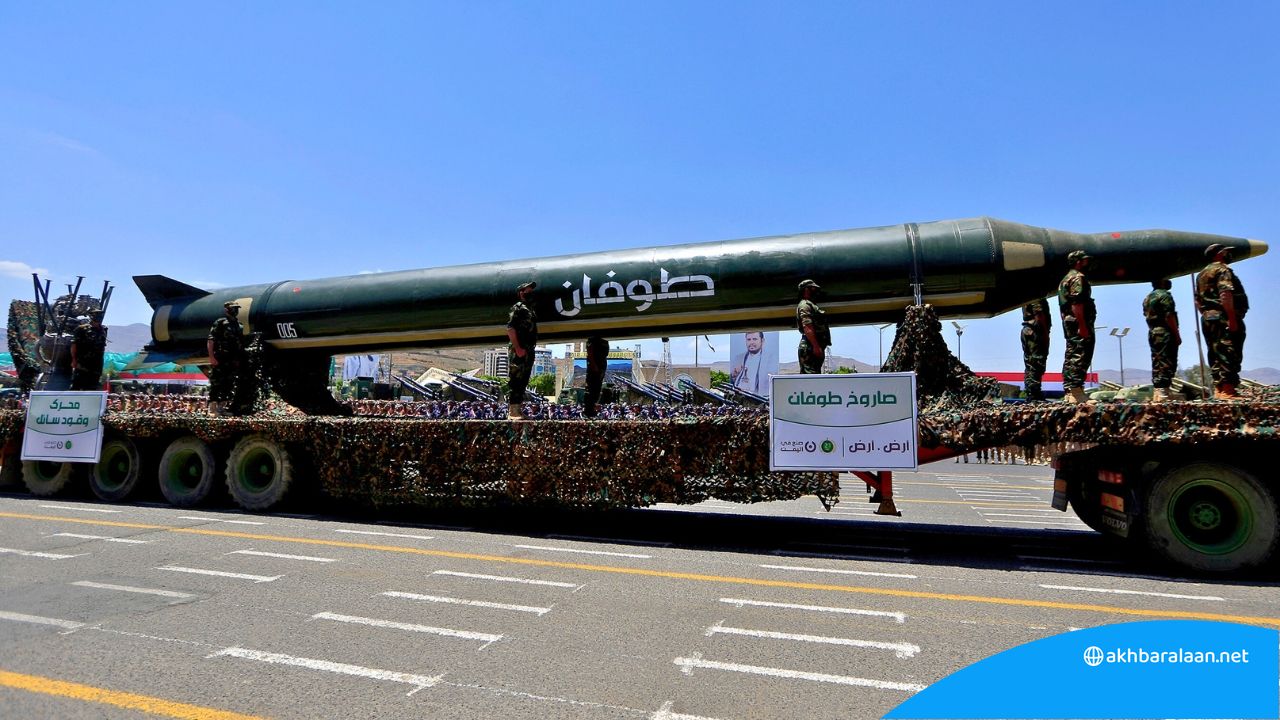Houthi militia targets Israel with advanced missile
Militia targeted Houthi In Yemen, the Israeli depth was hit with a missile that was said to be hypersonic and was able to avoid ground-based anti-aircraft fire.
The ballistic missile was described as advanced and was able to evade advanced Israeli defense systems, and behind them American radars, on Sunday morning, according to Houthi confirmation and Israeli acknowledgment.
The missile was not shot down until it passed over Israeli airspace, raising questions about possible malfunctions in the security systems in place.
The deputy head of the Houthi media office, Nasr al-Din Amer, said on the “X” platform that a Yemeni missile reached Israel after 20 interceptor missiles failed to shoot it down.
Channel 12 Israel confirmed that the army is investigating the reason for the failure to detect the missile before it reached central Israel, despite the long distance it traveled from Yemen.
The impact of Houthi missiles on neighboring countries
Saudi political analyst Mubarak Al-Ati told Akhbar Alaan that the presence of weapons in the hands of the Houthi militia poses a threat to international and regional security, and that their acquisition of advanced weapons threatens the region, international shipping lanes, and the interests of the countries of the region.
He added that the international community is now required to deal truly with the very great threat that the Houthis pose to Yemen, neighboring countries, and the Red Sea.
Pointing out that the Kingdom of Saudi Arabia realizes that those behind the Houthis are regional countries, most notably Iran, which continues to expand in Arab countries and believes that the militias are nothing but branches of the Revolutionary Guard that represent its will without putting political pressure on it.
Al-Ani explained that international sanctions on Iran and the imposition of monitoring of global trade routes are sufficient to dry up the sources of weapons from reaching the militias, whether from Iran or elsewhere.

Houthi missile
According to Western reports, Houthis They do not have their own ballistic missile industry, but their entire stock comes from Iran, which has worked over the past years to supply the axis of resistance in Syria, Iraq, Lebanon and Yemen with large quantities of missiles and drones.
According to the Jerusalem Post, the missile that was launched at Israel is known in Yemen as the “Tofan,” and is basically the Iranian “Ghadir” missile, which is a development of the “Shahab 3” missile.
Specifications of the Toofan missile
- This missile has a range of about two thousand kilometers, which is enough to cover the distance from Yemen to Israel.
- It is transported from its storage site by truck to the launch site, where it is assembled.
- The missile’s target is determined in advance, and its course cannot be changed or corrected during flight.
- Preparations for its launch, which mainly consists of filling its nose with fuel, take only about 30 minutes, instead of several hours.
- The missile is launched vertically and then follows a ballistic trajectory, meaning it moves in an arc or semicircle.
- The rocket flies through the atmosphere with its engine still running, propelling it forward.

Missile range
It would take only 12 to 15 minutes for a missile to reach central Israel if launched from Yemen.
Its pre-launch weight is estimated at 15 to 17 tons, but the warhead itself weighs about 650 kilograms, a large explosive charge that can cause massive and rapid damage to civilians as well as to poorly protected military facilities.
When the missile is set up for launch in Yemen, it is in an open area visible to Israeli and American reconnaissance satellites, which are supposed to monitor potential launch sites.
Also, when the missile is launched, the intense heat generated by its engine is monitored by the American missile warning satellite network, and the information is supposed to be transmitted to the Israeli army.
Over the course of 25 years, the Israeli Arrow defense system was developed to be able to intercept this type of missile, and several radar systems are supposed to detect and track the missile when it is on its path towards Israel.
These systems include the US and Israeli naval radars in the Red Sea, the long-range radar in the Negev operated by the US forces, and finally the Arrow radar. It remains unclear whether the missile was detected in time, and why it was not intercepted by the Arrow system as planned.




